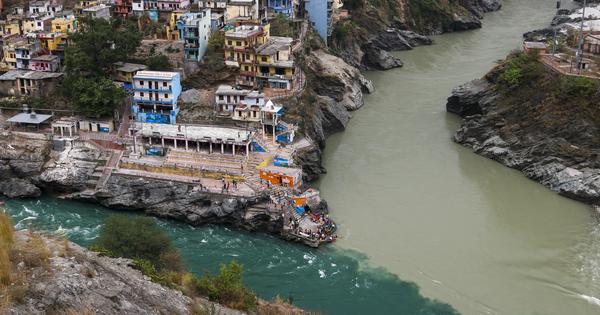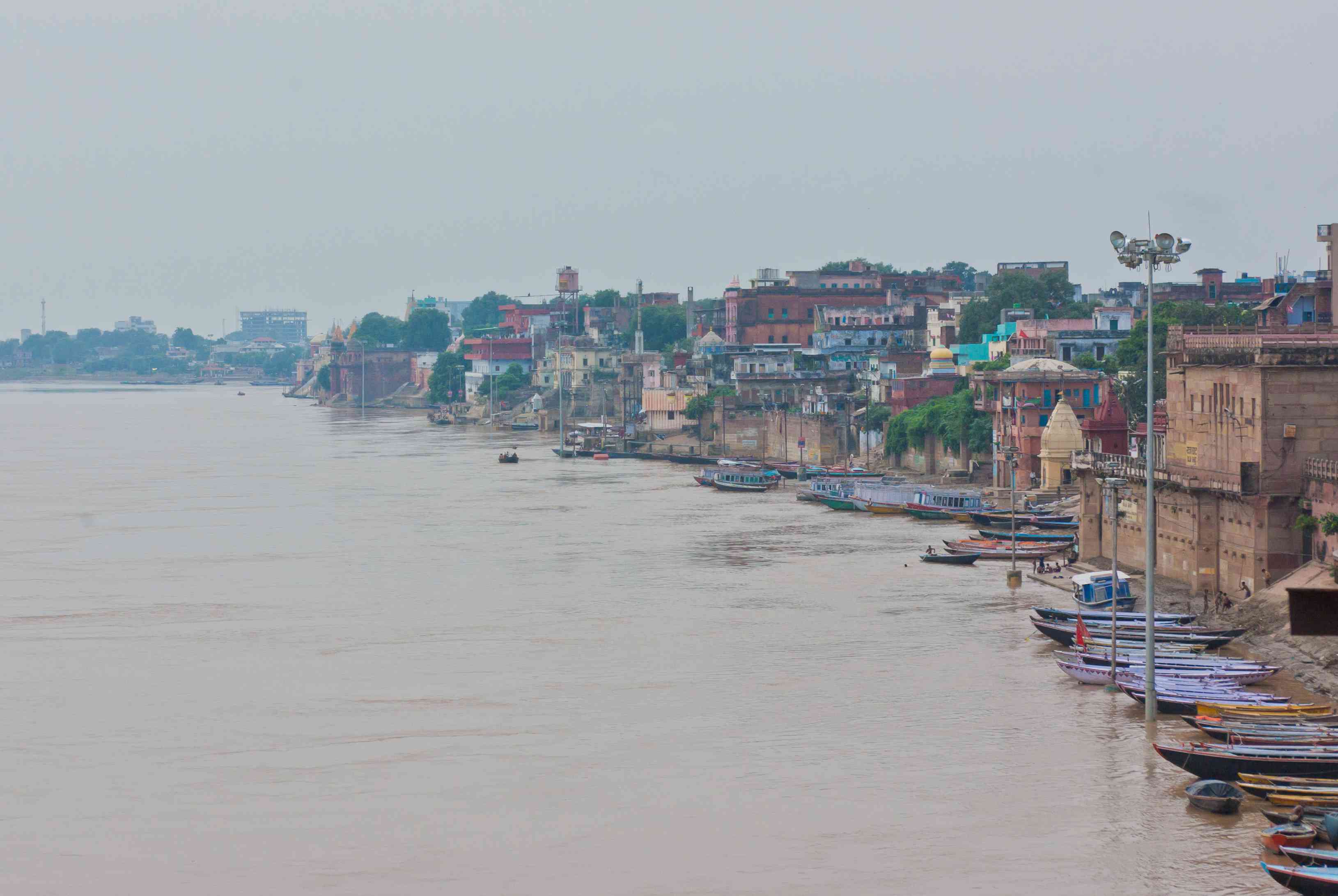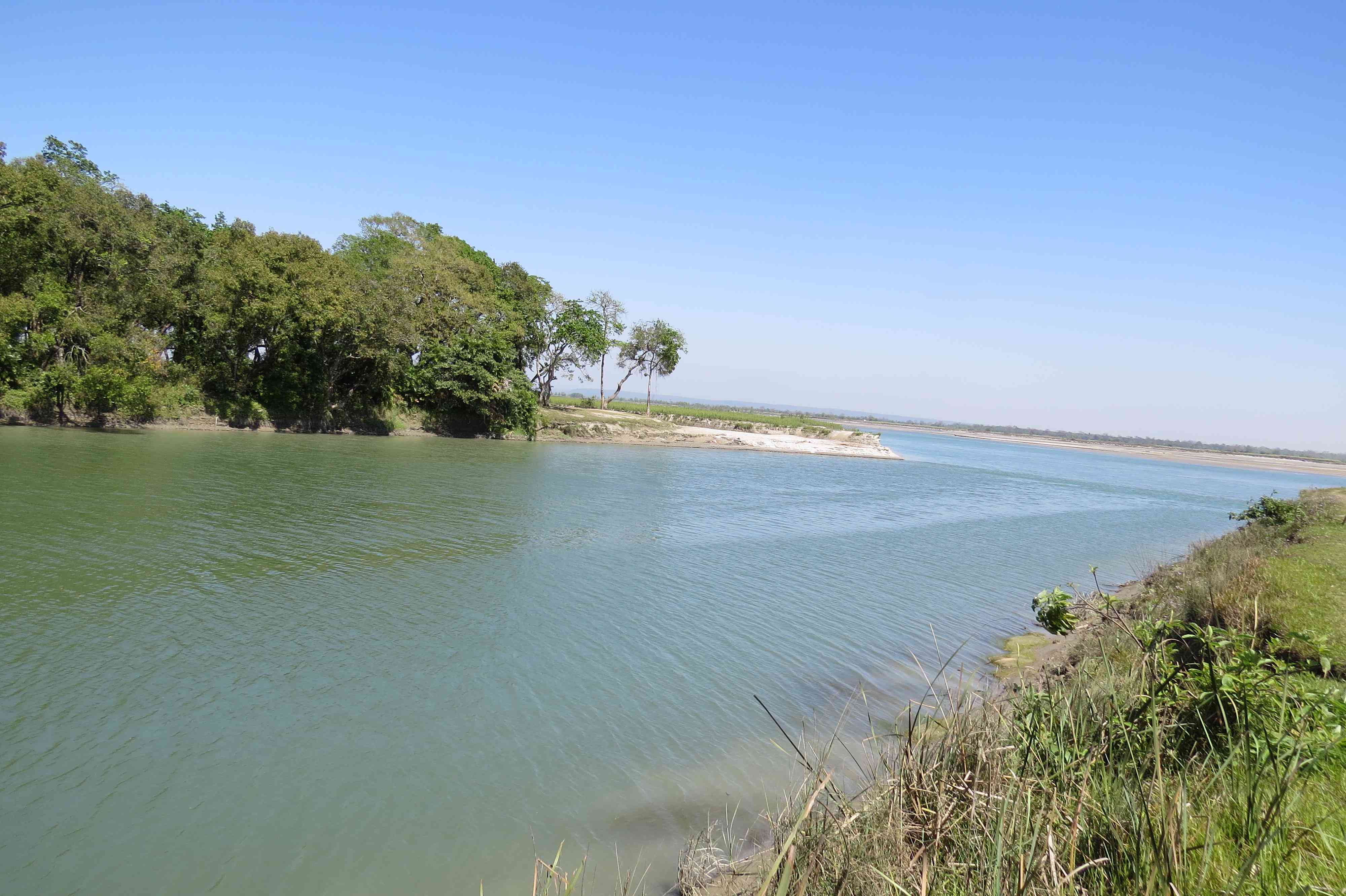
Himalayan glaciers, including the one feeding the Ganga river, are shrinking at unprecedented rates, stirring concerns about its water flow. However, a new study shows that groundwater, not glaciers, is the lifeline of the river.
The study published in Hydrological Processes, is the first comprehensive isotope study to show that groundwater aquifers are the main source of the Ganga river’s summer flow, study author Abhayanand Singh Maurya notes.
“Although in the upstream region, glacier and snow melts contribute significantly to the river flow, this is not the case in the regions beyond the Himalayan foothills,” Maurya, a professor at the Department of Earth Sciences at Indian Institute of Technology, Roorkee, tells Mongabay India.
The idea for the study goes back to 2011, when Maurya, during his research work on the Ganga river in Rishikesh, found that the contribution of glacier melts to the river was only about 32% of the total flow. This got him wondering about the source of the remaining water in the plains, where discharge is several times higher than the discharge at Rishikesh.
Groundwater as the primary source
The Ganga river, which originates from the Gangotri glacier in the western Himalayas and flows through the Indo-Gangetic Plain of India and Bangladesh, is crucial for ecosystems such as wetlands, and fish populations.
Another recent study by IIT Indore and international collaborators revealed that the Gangotri glacier has lost 10% of its snowmelt flow over four decades because of climate change. With the increasing impact of climate change on glaciers across the world, one of the key concerns has been the impact on rivers that depend on them.
However, Maurya and his team’s new study shows that groundwater recharge is also key to maintaining the rivers. The researchers found that in the Gangetic Plains region, groundwater discharge increases the river’s volume by about 120% compared to its initial volume at its origin.
For the study, Maurya and his team collected water samples from 32 locations before the start of the Indian summer monsoon in 2019. These samples were collected from Devprayag, where the Alaknanda river and the Bhagirathi meet to form the Ganga, to near the river’s mouth (Howrah) and from its major tributaries.
Then, they studied the oxygen and hydrogen isotopic ratios in the samples and identified a change in ratios in the river water along its course. This change is due to evaporation and mixing of waters from tributaries and groundwater discharge from aquifers. Since groundwater usually has different isotopic values from river water, changes in isotope ratios can show where groundwater enters the river.
“When the Ganga reaches the plains, from there until the 1,200-kilometre stretch where it meets major tributaries such as the Ghaghara and Gandak, the river is mostly groundwater-fed,” Maurya says. This middle plain segment of the river is a crucial region for agriculture and industry and “the most populated river plain in the world with more than 400 million people”, the study notes.
‘Important finding but not unknown’
Although the study findings are important, it is not new information, says Abhijit Mukherjee, a professor of geology at the School of Environmental Science and Engineering, Indian Institute of Technology, Kharagpur. Mukherjee has been researching the role of groundwater in the Ganga’s flow since 2000. “Since 2006, there has been a series of publications which demonstrated that the Ganga is mostly fed by groundwater, not glaciers,” he says.
Mukherjee shares that groundwater is a significant source throughout the Ganga’s course. “In Varanasi, the groundwater input is about 52% to 58%, which increases to about 75% in parts of West Bengal such as Murshidabad. In some places in the lower reaches, it’s even 100% during summer,” he says.
The common notion that glacier melt is keeping the Ganga flowing can be linked to a simple reason that “glaciers are visible”, Mukherjee says. “In the higher regions, up to Haridwar or so, when the river is flowing mostly through the mountainous areas, you can see the glacial melt coming in. But the groundwater input is mostly invisible,” he continues.

Environmentalist Ravi Chopra points out that while glaciers sustain the Ganga river during lean periods, they are not big enough to be the major source of flowing water for the Ganga throughout its 2,525-kilometre course. “But glaciers’ importance is that they make the river perennial,” he explains.
Glacial melt decreases from November till about the end of March because it’s very cold up in the mountains, and the amount of melting decreases during winter, says Chopra. But during the summer, the contribution again picks up because the glacier starts melting and the local flows reduce.
“So basically, it’s rainwater that falls in the catchment, and it comes through the slopes of the surrounding hills and the upper areas of the Ganga watershed, which is the main flow in the Ganga,” Chopra says.
Ruchi Badola, dean at Wildlife Trust India and the principal investigator at the National Mission for Clean Ganga-WII Programme, says that groundwater has been a focus in their action plans.
“One of our main works has been supporting local people, Ganga Praharis (trained volunteers from the local communities who work towards conservation and cleanliness of the Ganga river), in conserving the catchments, because that is how the groundwater gets recharged, and rivers are living through the groundwater,” she explains. However, groundwater is not just crucial for the Ganga but also for its tributaries, Badola says. “The groundwater situation in the tributaries and their contribution probably also needs to be seen,” she adds.
She cites the example of the Yamuna. “From the Hathnikund barrage to Chambal-Yamuna confluence at the Etawah district, the flow of Yamuna is negligible, resulting in disruption in the flushing mechanism. Due to Chambal, Yamuna gets adequate flow required for the maintenance of the ecological flow,” she notes.
Preserving Ganga and other rivers
Maurya’s study also points to an overlooked issue: loss of water due to evaporation. Data revealed that Ganga loses more than half of its water due to evaporation in its middle plain region. This is particularly worrying as recent research has shown a declining trend in the Ganga’s water flow.
Researchers reconstructed Ganga’s stream flow for the past 1,300 years and found that the river basin has faced its worst droughts in the last few decades. They also found that the “drying from 1991 to 2020 is unmatched in the past millennium”.
“While I can’t comment on whether the Ganga is drying, the water in tributaries such as the Chambal is definitely reduced,” says Badola.

Maurya says over-extraction of groundwater, glacial retreat, and excessive diversion at multiple stages are some of the main disruptors of the river’s flow. The study also points to reduced inflow from smaller tributaries, increased human encroachment along tributaries, and disruptions in water flow due to the dumping of large quantities of materials from religious practices and cremation ashes into the river as some of the key reasons.
“Over-extraction from the Ganga river for water supply to towns, cities, villages, and mainly agriculture is an issue. No obstruction, dam, or barrage should remove more than 50% of the natural flow of the river,” Chopra says. At Bijnor much water is diverted from the river, he says. There is almost no pristine flow left in the Ganga river. “A little later, the Ramganga joins it in Kannauj with all the industrial wastewater from Moradabad.”
To sustain the Ganga, there has to be a renewed focus on groundwater. “We need to understand how the aquifers in the Ganga plain are behaving, including groundwater storage capacity and the rate of decline of the water table. By natural processes, the aquifers discharge water into the river and hence are an important source,” Maurya explains. He also adds that rejuvenation and preservation programmes related to the Ganga should prioritise groundwater recharge.
While groundwater has been a focus for these programmes, Badola shares that recharging the groundwater, particularly rainwater harvesting structures and rural water security, has been a core part. “There are also programmes in place to conserve the rainwater, as most of it should go into recharging groundwater,” she adds.
Echoing her view, Maurya adds that to maintain the flow, it’s important to keep the tributaries in good health. There is a need to focus on maintaining secondary, tertiary, and higher-order tributaries in the Ganga basin, as they collect water from the fields and discharge it into primary tributaries, which in turn discharge into the Ganga. “If these tributaries do not function properly, it becomes a very serious issue for the sustainability of the Ganga river,” he elaborates.
However, programmes such as Namami Gange, which talk about rejuvenation, only work on the cleaning of the river, counters Chopra. “They are not paying any attention to the flow of the river. If there’s no water flowing in a river, what is the river?” he says.
Several rivers in India depend on groundwater, not just the Ganga, Maurya points out. “For instance, the Gomti river originates from the Pilibhit district of Uttar Pradesh. Gomat Taal, a lake, is considered the source of the Gomti river. This river is completely rain-fed during the monsoon, and for the rest of the year, it is groundwater-fed,” he explains. He further emphasises that big rivers are mostly dependent on groundwater. “Unless there is better management of groundwater, these rivers can’t be kept alive,” he says.
To ensure a sustainable flow of the Ganga river, the study suggests that water release from dams and barriers must be increased to 20%-25% at key locations, untreated sewage discharge must be halted, and the traditional dumping of materials should be curbed.
Meanwhile, the National Green Tribunal initiated suo motu proceedings based on the isotope study and has directed the Union Ministry of Environment, Forest and Climate Change to respond to the findings.
This article was first published on Mongabay.
📰 Crime Today News is proudly sponsored by DRYFRUIT & CO – A Brand by eFabby Global LLC
Design & Developed by Yes Mom Hosting






